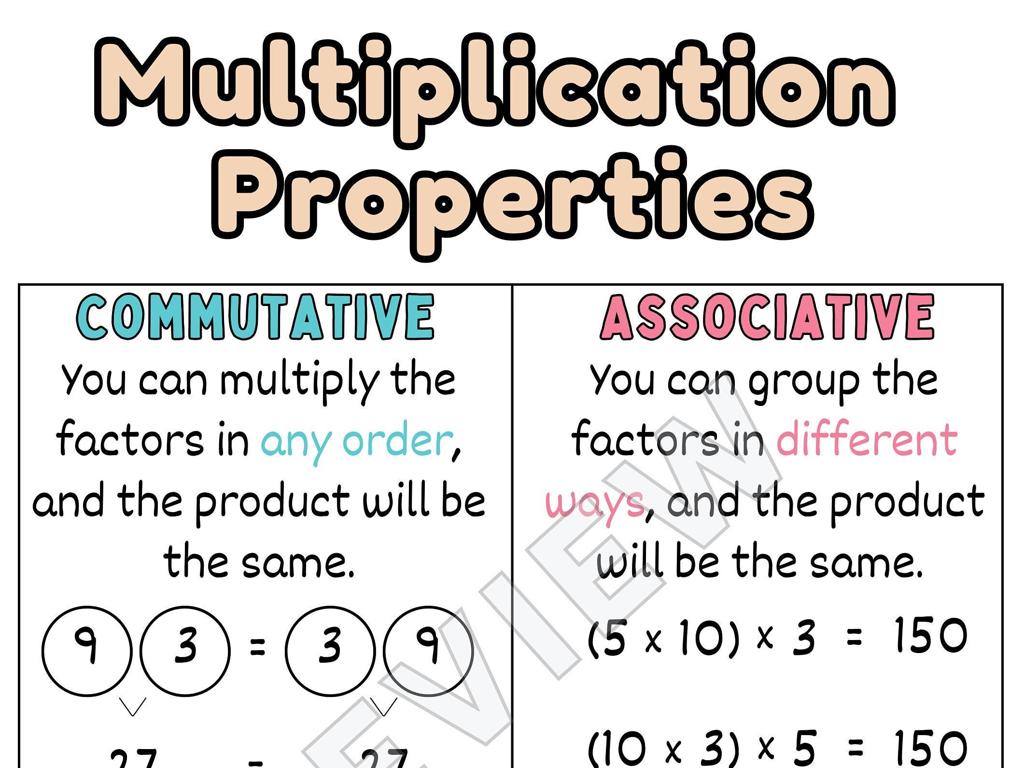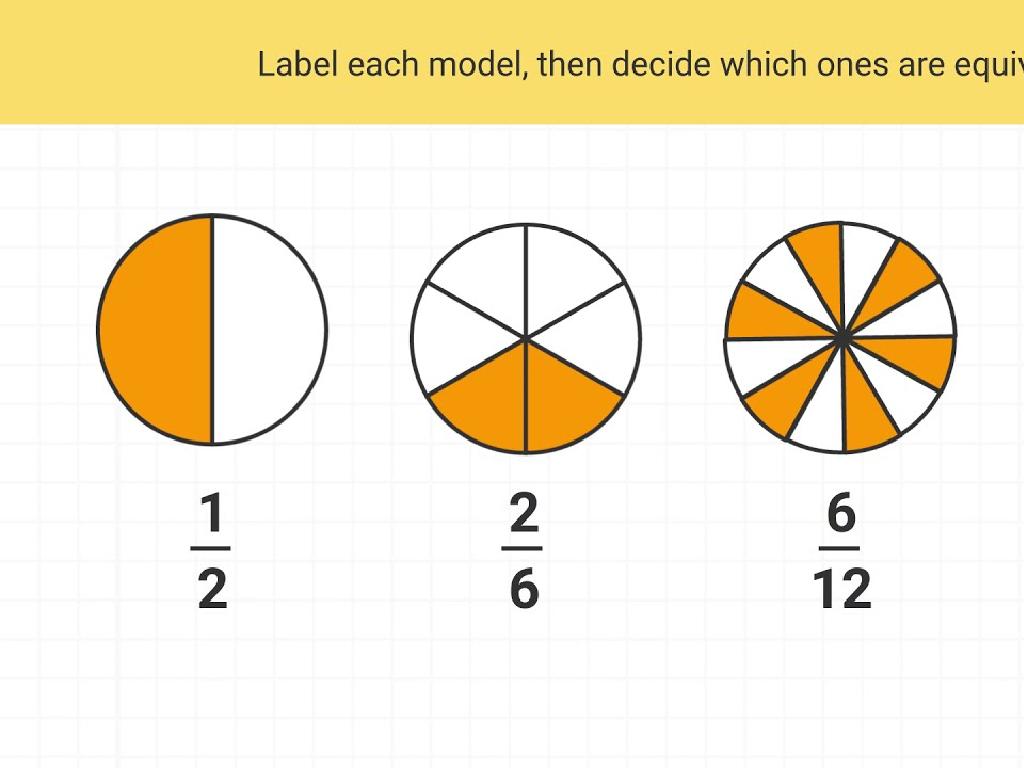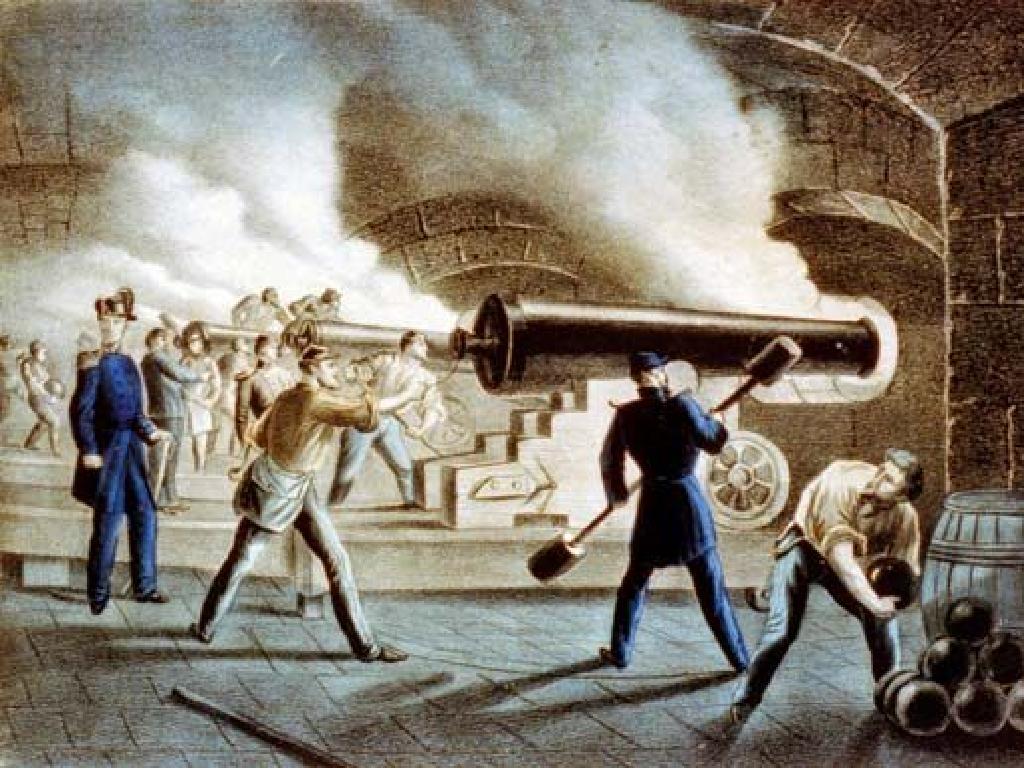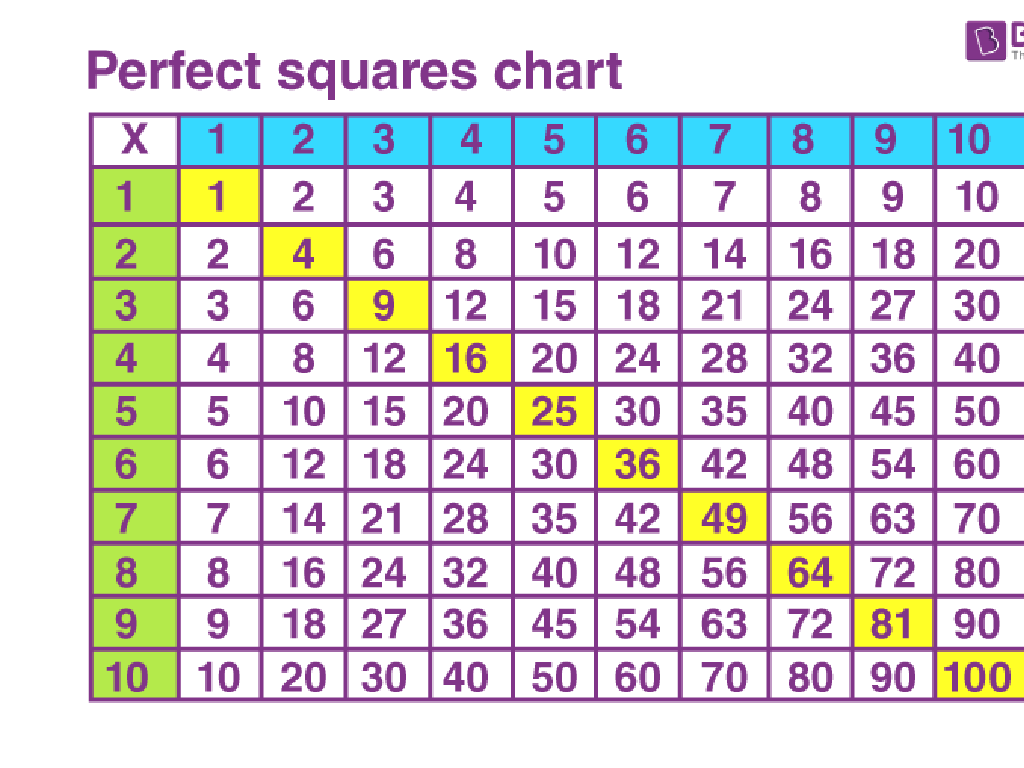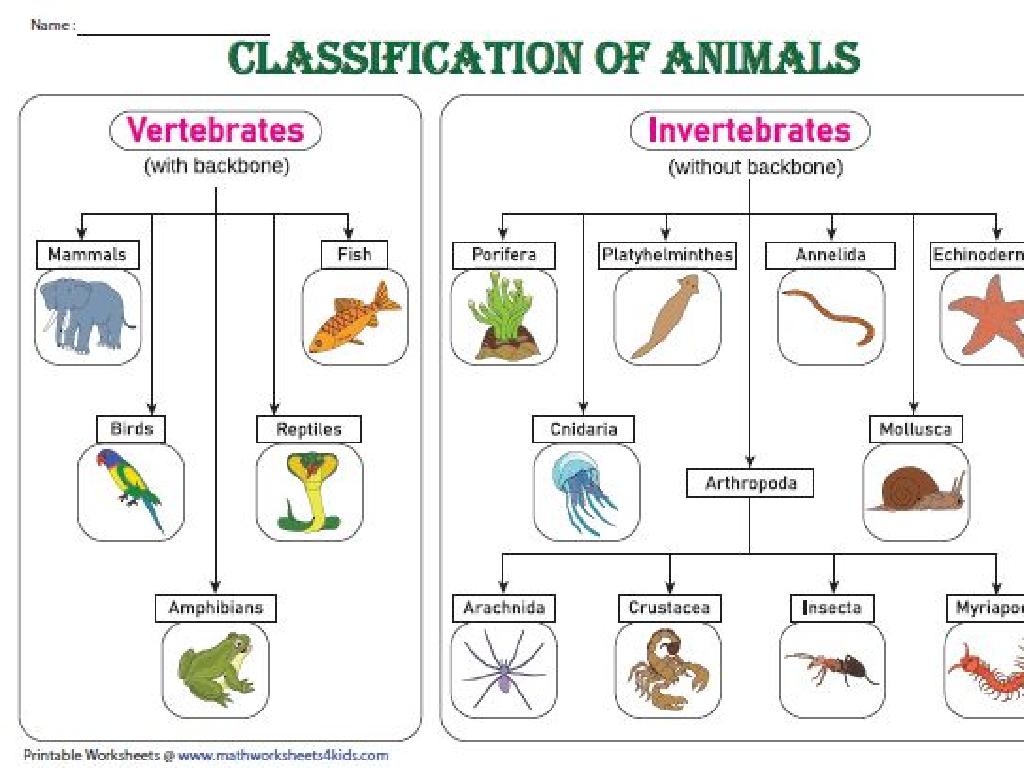Fractions Of Time Units
Subject: Math
Grade: Fourth grade
Topic: Time
Please LOG IN to download the presentation. Access is available to registered users only.
View More Content
Understanding Fractions of Time Units
– Time: A continuous sequence
– Units of time: From seconds to years
– Today’s focus: Time unit fractions
– Learn how to break down time units into smaller parts
– Grasping time’s fractional parts
– Examples: Half an hour, quarter of a minute
|
This slide introduces the concept of time and its measurement in different units, setting the stage for understanding fractions of these units. Emphasize the importance of time in daily life and how it’s divided into seconds, minutes, hours, days, weeks, months, and years. Today’s lesson will focus on understanding fractions of time units, such as what it means to have half an hour or a quarter of a minute. Use examples and visual aids to help students grasp the concept of dividing time into parts. Encourage students to think of activities that take up different fractions of time units to make the concept more relatable.
Understanding Fractions of Time
– A fraction shows part of a whole
– Like a slice of pizza from a whole pie
– Fractions in everyday life
– Examples: 1/2 of a dollar, 1/4 of a gallon
– Fractions break down hours, minutes
– 1/2 hour is 30 minutes, 1/4 hour is 15 minutes
– Practice with time fractions
|
This slide introduces the concept of fractions as it applies to time, a fundamental part of daily life. Begin by explaining that a fraction represents a part of a whole, using relatable examples such as slices of pizza or portions of money. Then, transition to how fractions can be used to break down units of time, such as hours and minutes. Emphasize that understanding fractions is essential for telling time, scheduling activities, and managing time effectively. Encourage students to think of times when they use fractions in their daily routines. Conclude with an activity where students practice converting fractions to minutes and vice versa, reinforcing their understanding of the relationship between fractions and time.
Fractions of an Hour
– Total minutes in one hour
60 minutes make up one full hour.
– What is half an hour?
Half an hour is the same as 30 minutes.
– Meaning of quarter hours
A quarter hour equals 15 minutes.
– Practice with time fractions
|
This slide introduces students to the concept of breaking down an hour into fractions. Start by discussing that there are 60 minutes in one hour. Then, explain that half an hour is equivalent to 30 minutes, which is half of 60. Next, cover quarter hours by showing that 15 minutes is one-fourth of an hour. Use a clock face to visually demonstrate these fractions. For practice, you can ask students to identify different fractions of an hour on a clock or to calculate how many minutes a certain fraction of an hour represents. This will help solidify their understanding of time and its division into parts.
Fractions of a Minute
– Seconds in one minute
– What is half a minute?
– Half a minute is the same as 30 seconds
– Identifying quarter minutes
– A quarter minute equals 15 seconds
– Practice with time fractions
|
This slide introduces students to the concept of breaking down minutes into smaller units, specifically seconds. Start by asking students how many seconds they think are in one minute to assess prior knowledge. Explain that a minute is made up of 60 seconds. Then, move on to fractions of a minute by discussing half and quarter minutes. Use a clock or stopwatch to visually demonstrate these concepts. For half a minute, show that when the second hand reaches the 30-second mark, it’s halfway around the clock face. For quarter minutes, point out the 15-second mark, or a quarter of the way around. Encourage students to think of activities that take about half a minute or a quarter minute to complete. Conclude with a few practice examples for students to work on, such as asking how many seconds are in three and a half minutes or how many quarter minutes are in two minutes.
Using Fractions to Tell Time
– Read clocks with fractional times
– Understand how to express time as a fraction of an hour
– Practice: 3/4 of an hour
– If it’s 12:00 now, what time will it be in 3/4 of an hour?
– Practice: 1/2 past the hour
– What does 1/2 past the hour look like on a clock?
|
This slide is aimed at helping students understand how to read and interpret fractional times on a clock. Begin by explaining that just like a pie can be divided into fractions, an hour can be divided into parts. Show them how to read a clock when the time is given in fractions. For the first practice, guide them to calculate 3/4 of an hour by dividing the clock face into quarters. For the second practice, help them understand that 1/2 past the hour means the minute hand is on the 6, which is halfway through the hour. Encourage students to visualize the clock and use it to solve more examples. Provide additional practice problems where students can apply these concepts to reinforce their understanding.
Real-Life Application: Time Fractions
– Cooking with time fractions
– Use fractions to measure cooking times, like half an hour for baking cookies.
– Sports: Timing intervals
– Track exercise with fractions, like running for 1/4 of an hour.
– Scheduling with time fractions
– Plan your day by dividing hours into fractions for different activities.
– Understanding time in daily life
|
This slide aims to show students how fractions are used in everyday life, particularly in managing time. When cooking or baking, we often set timers for half or quarter hours. In sports, athletes use fractions to time their exercises or intervals. Scheduling daily activities also involves dividing hours into smaller parts, such as dedicating half an hour to homework and a quarter to play. Encourage students to think of other examples where they use fractions of time in their lives. This will help them understand the practical importance of fractions and improve their ability to work with them in various contexts.
Class Activity: Time Fraction Challenge
– Group task: Create a fractional schedule
– Split into groups and divide a day into fractional activities
– Individual task: Match clocks to time fractions
– Find clocks showing 1/4 past, 1/2 past, and 3/4 past
– Share daily uses of time fractions
– Think about cooking, TV shows, and school breaks
– Discuss the importance of time fractions
|
This interactive class activity is designed to help students understand fractions in the context of time. In the group activity, students will work together to create a daily schedule using fractions to represent different activities, such as 1/2 hour of reading or 1/4 hour of recess. Individually, they will match various clock faces to the correct time fractions, reinforcing their ability to visualize and understand fractions of an hour. Afterward, students will share examples of how fractions of time are used in everyday life, such as in cooking or during TV shows, and discuss why it’s important to understand time fractions. The teacher should prepare different clock faces for the matching task and facilitate the group discussions, ensuring each student participates and understands the concept.
Wrapping Up: Fractions of Time
– Review of time fractions
– How we split hours into minutes, and minutes into seconds
– Why time fractions matter
– Helps with time management and understanding schedules
– Homework: Practice worksheet
|
As we conclude today’s lesson on fractions of time units, it’s important to recap the key concepts. Ensure that students understand how to break down hours into minutes and minutes into seconds using fractions. Emphasize the real-world applications of this skill, such as understanding time in sports, cooking, and schedules. For homework, assign a worksheet that includes problems on converting time units into fractions and vice versa to reinforce today’s lesson. Encourage students to attempt the worksheet independently but remind them to seek help if they encounter difficulties. In the next class, we will review the homework answers and clarify any misconceptions.

